This year’s American Association for Nude Recreation (AANR) election was interesting and thought provoking. There were two good choices for president. One offered evangelical change while the other offered seasoned administration. The membership voted for evangelical change, which arguably is in response to unfolding dynamics in American society and its body culture. The times they are a-changin’, and they are presenting clear challenges (and opportunities) for Nudism/Naturism and AANR. What follows are some ruminations about this. They are intended as food for thought. Some may be provocative. They do suggest that an exercise in strategic planning and exploration may be worthwhile.
AANR is important. AANR is more important than people realize. Nudism is not just an enjoyable form of recreation. It is also an ambitious social movement to advance a wholesome and healthy body culture in American society. While many do not think far beyond the pleasures of spending a day with their kit off, convivial social nudism teaches attitudes and values that are inherently respectful, accepting and healthy. Sound and constructive body ethics get internalized through experience and are of great service to the individual. If practiced on a large scale, they can bring considerable benefit to society. Organized and resourced collective action by AANR has been historically critical to securing rights for body freedom and will be essential to realize the potential of nudist ideals in the future.
There is a need for governance. AANR has a role to play as an arbiter of standards and a good-housekeeping seal of approval. It is a reality that all people have instinctual, innate sex drives. For most, these drives are dormant in non-sexual nude settings and at non-sexual nude times. However, and unfortunately, there are some people who are unable or unwilling to self-regulate. They cross lines of acceptable public decency and/or harass folks to assuage their desires. Many skinny-dipping sites have been lost by thrill-seekers abusing nude tolerant conditions, and complaints of unsolicited propositioning or gawking in nude settings are perennial. It only takes a few to blow it for the many. On the other hand, organized management such as found at clubs, or beaches with ambassador programs, has proven to be extremely helpful (though not perfect) to regulate and enforce publicly acceptable behavior. AANR has a role to play in establishing and communicating standards that work and in defending those standards, legally if necessary. AANR also has a recognized brand that can convey those standards to clubs and other venues as a good housekeeping seal of approval. A good demonstration of this is recent legislation in Florida that legally recognized AANR as an arbiter of legitimate nudist activity.
It may be a good time for strong female leadership. The recent AANR election appears to be a call for change. An outspoken, social media savvy, female advocate was chosen over an effective, male government lobbyist from the old guard. While gender may not have been the deciding factor, it may be a signal that the time is right for the Nudist/Naturist Movement to be driven by strong female leadership representing a younger generation. The rise of the body positivity trend and the increase in energetic activity by WINR (Women In Nude Recreation) may also be markers of an emerging assertiveness on the part of females to establish a body culture that works for them. Women have been under-represented in American social nudism forever. For all its progress, the feminist movement has not managed to negate issues of shame, confidence and objectification that trouble many women’s attitudes about their bodies. Ultimately, women will have to stand up and lead to resolve these legacy issues. It can be done. Most men will welcome strong female leadership in the Nudist/Naturist Movement and support them in the process. By definition, a wholesome and healthy body culture will be gender balanced and equitable with shared norms of behavior that work for all. Women must be a driver in the quest for widely embraced, family-friendly nude norms.
To everything, there is a season. Like many things, cultural dynamics are cyclical. Nudism/Naturism too has a history of waxing and waning. We appear to be in a waning phase judging by club closures, declining membership, bashful locker room behavior, etc. However, the cycle will turn. In fact, there are already encouraging counter-cyclical signs. Situationally, this may be why AANR membership chose an evangelist to be their next leader now. Ultimately, the right leadership will find the right conditions at the right time to make progress.
Context matters. While Nudism/Naturism is a movement and sub-culture unto itself, it operates in the broader context of all the other cultural forces affecting society. Elements such as internet social media, mass consumer marketing, the sexual revolution, mass distributed pornography, secularization, feminism, LGBTQ, processed food, fashion and many other dynamics profoundly shape body culture. It is tough competition, especially given the amount of money and power that is at stake. Regardless, we are now approaching the 100th anniversary of organized nudism in the U.S., and it is fair to say that in every generation a core minority emerges that innately grasps the goodness of Nudist/Naturist living and keeps the game going. This movement has staying power, and patient perseverance will eventually find success.
Successful social movements share certain characteristics. They include: a shared and clearly defined set of strategies, effective and charismatic leadership (effective will do), a wide supportive economic base, and unified human resources. The Nudist/Naturist Movement appears to be lacking on all fronts in this regard, which is discouraging. However, there is nothing that says these characteristics cannot be pulled together. AANR is not a large organization, but it does have some resources, a brand and a history to build upon. Thoughtful research, experimentation and strategic planning may illuminate a pathway and opportunities for success.
The 3½% Rule. There is a rule of thumb that it only takes about 3½% of a population to succeed in effecting social change. In the U.S., this would amount to almost 12 million people, which sounds like a lot… However, when you consider all the people who have skinny dipped, shared a sauna or hot tub, visited a club, free-hiked a trail, gone to a spa, taken a nakation, slept in the nude or just spent clothes-free time at home, it’s not that big a number at all. It is only on account of social stigma that the vast reality of nude body culture is understated and underground. The challenge is to clearly define and grow the set of openly acceptable places and times for ethically practiced, non-sexual nude living past the common knowledge tipping point. Clubs alone cannot achieve this. There are not enough nor are they big enough. A strategy that can align millions of people to affiliate with, support or simply accept the AANR cause is necessary. Is it possible for AANR to think big, cast a wide net and succeed? I do not know. I do know that if the 3½% measure were ever attained, AANR clubs and resorts would be in good shape businesswise.
Strategy informs structure. It appears that AANR has long been organized geographically around regional club groups that cooperatively gather resources to support lobbying, legal and promotional efforts. One wonders, perhaps unfairly, if this organization structure is a legacy from a time before the electronic age when cars and highways were still relatively new. If AANR’s strategic priority is the clubs, this structure may be fine and appropriate. It’s OK to serve a niche. However, if there is a plausible, clear and consensual strategy to grow nude body culture in a nationally impactful way, AANR may have to organize itself differently to achieve a productive set of goals and objectives in that direction.
Politics adds challenges to the challenge. The history of organized nudism has long been characterized by political challenges and fragmentation. Early on, a democratic faction rose up to contest Ilsley Boone’s autocratic approach. Later, Lee Baxandall’s Naturist Society rose up as an alternative to the American Sunbathing Association (now AANR). Presently, in addition to AANR and the TNS Foundation, there are a handful of national and regional organizations focused on beaches, younger demographics, education and advocacy. They all share in the big picture mission but have various philosophical and operational differences. It may not be practical to consolidate all these organizations to get all the wood behind one arrowhead, but increasing alignment, collaboration and coordination could be effective if achieved.
Make haste slowly. Culture changes gradually… over generations. While there are important matters to be dealt with right away, such as problematic legislative initiatives in places like Wisconsin and Florida, there must also be a sustained, steady drumbeat of evangelical effort to progress and grow. The vision, I believe, is to achieve a healthy American body culture that includes broadly accepted norms for non-sexual social nudity in appropriate places at appropriate times. Even though reaching a cultural tipping point will take (a long) time, progress can be measured by smaller milestones along the way. This movement has staying power to play a long game. Patient perseverance can eventually succeed.
Don’t worry about the whiners. It is common to see complaints that clubs and resorts are too far away, too expensive, too old, too male and too boring. As one who once had to travel far, with limited funds, to hang out with a majority male crowd, doing not much, I can say for myself that it is all worth it, nonetheless. I have met great people, had lots of laughs, enjoyed the elements and nature and perhaps most importantly, communed with people who share my values. There are always whiners. There are also those who figure out how to make things work better. Leadership emerges, and they gather friends, set up volleyball clubs, concert and art festivals, protest bike rides, gatherings and such, and work with venues to get stuff done. It may be useful to worry more about the emergent doers than the whiners. Instead of, or in addition to, a “build it and they will come” attitude, a “come and we’ll help you build it” approach could help.
Summary. The bottom line is that AANR is important, and all who believe in the benefits of nude living should support it to aid in its success. There are many aspects of AANR that are effective and work well. At the same time, there are strategic issues and opportunities that appear to be calling for AANR to evolve and adapt. The Nudist/Naturist Movement in America is a small minority sub-culture that for almost 100 years has demonstrated persistence and promise as it waxes and wanes. To grow beyond its small niche toward the ideal of a broadly accepted, wholesome and healthy American body culture will require organized and resourced collective action over a long haul. A new generation of leadership is emerging that may be well suited for the emerging demographics and the attitudes of the coming age. Strategies and opportunities that could be scalable are worth exploring. Things that are right and good have a way of persisting through change despite obstacles and human fallibilities. Nudism/Naturism as a movement will find its way, and we should be grateful for AANR and its leadership and all that they do.



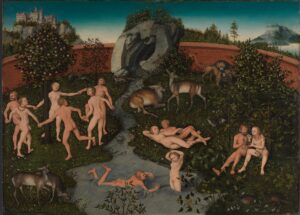
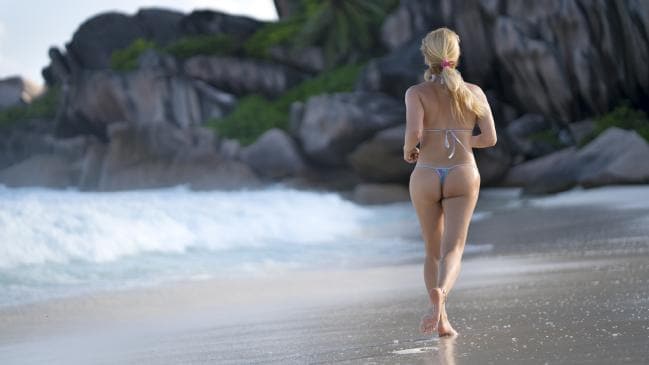
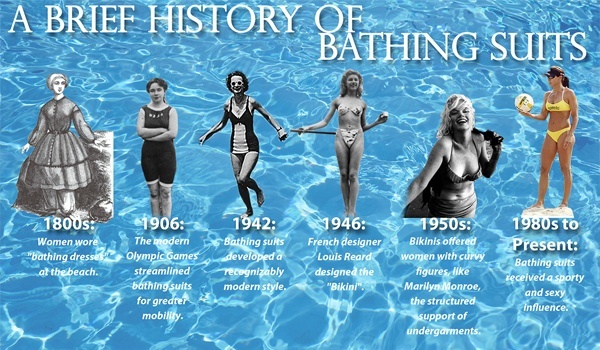
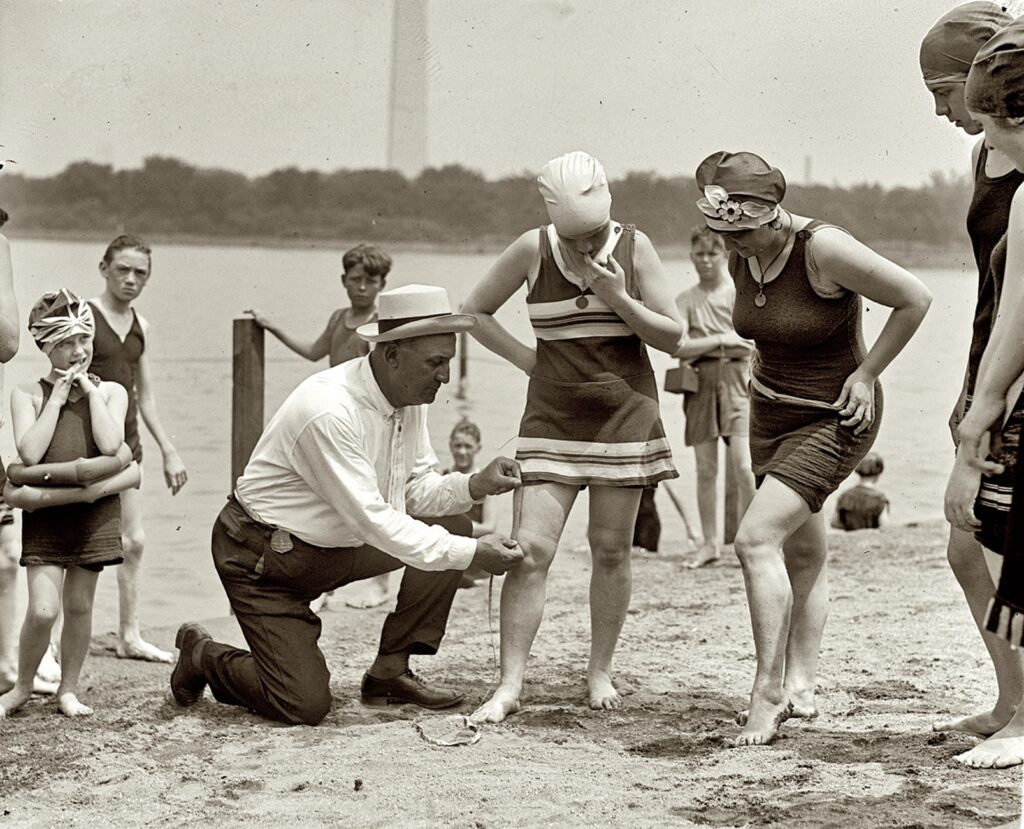
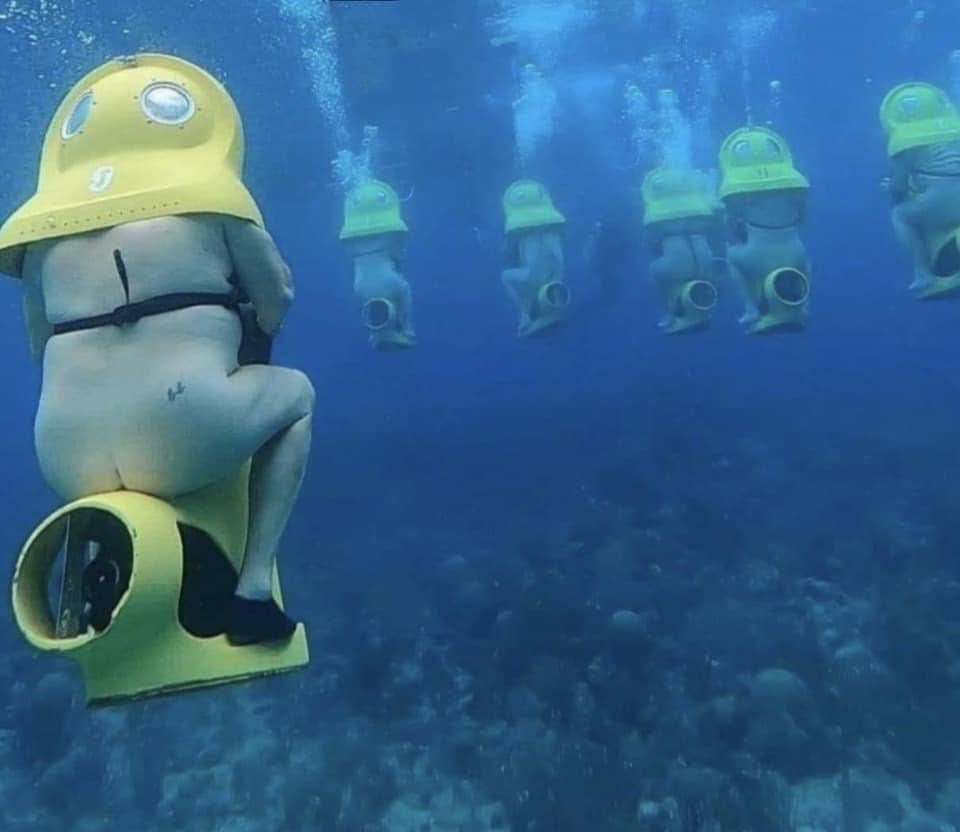
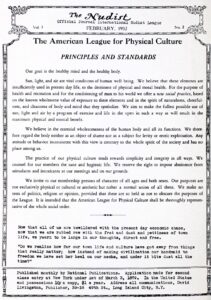
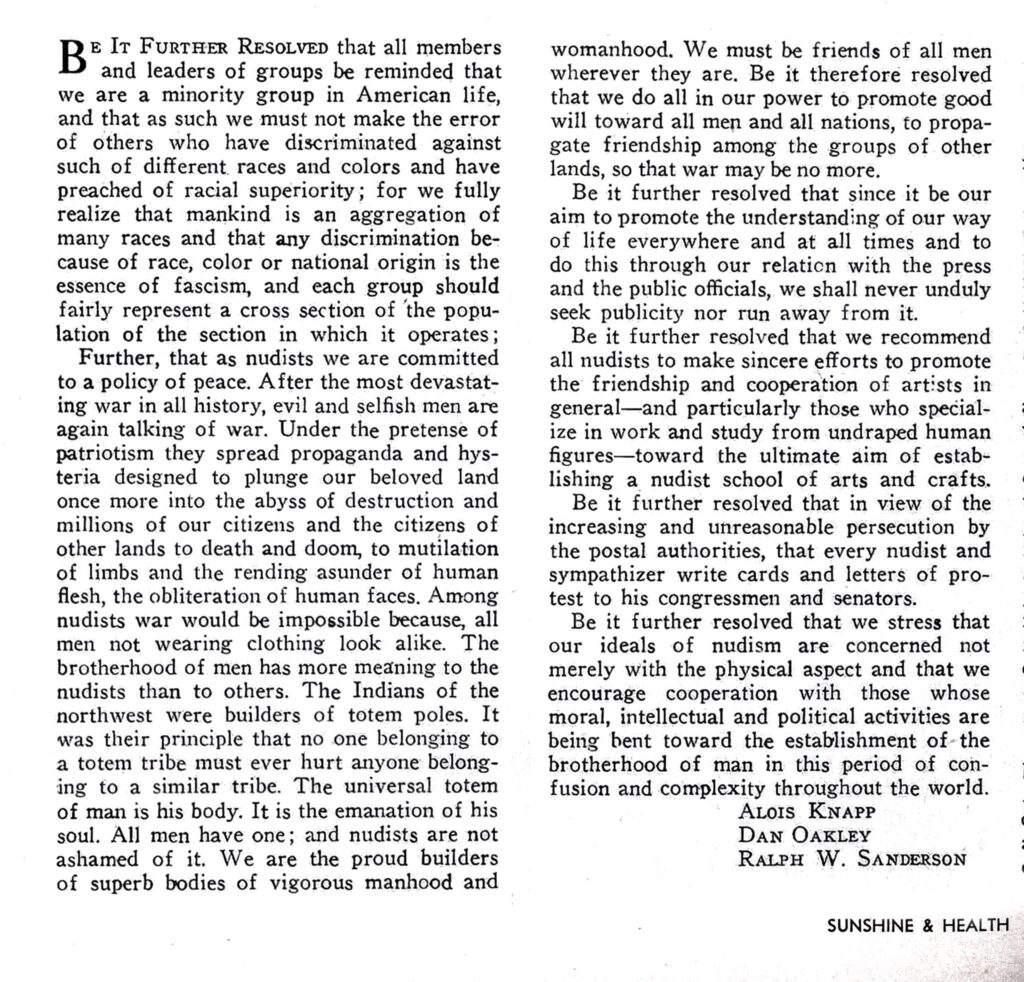
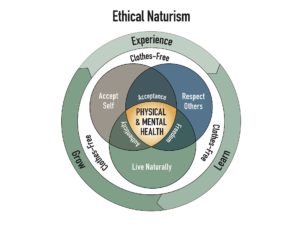 Image by Stéphane Deschênes
Image by Stéphane Deschênes